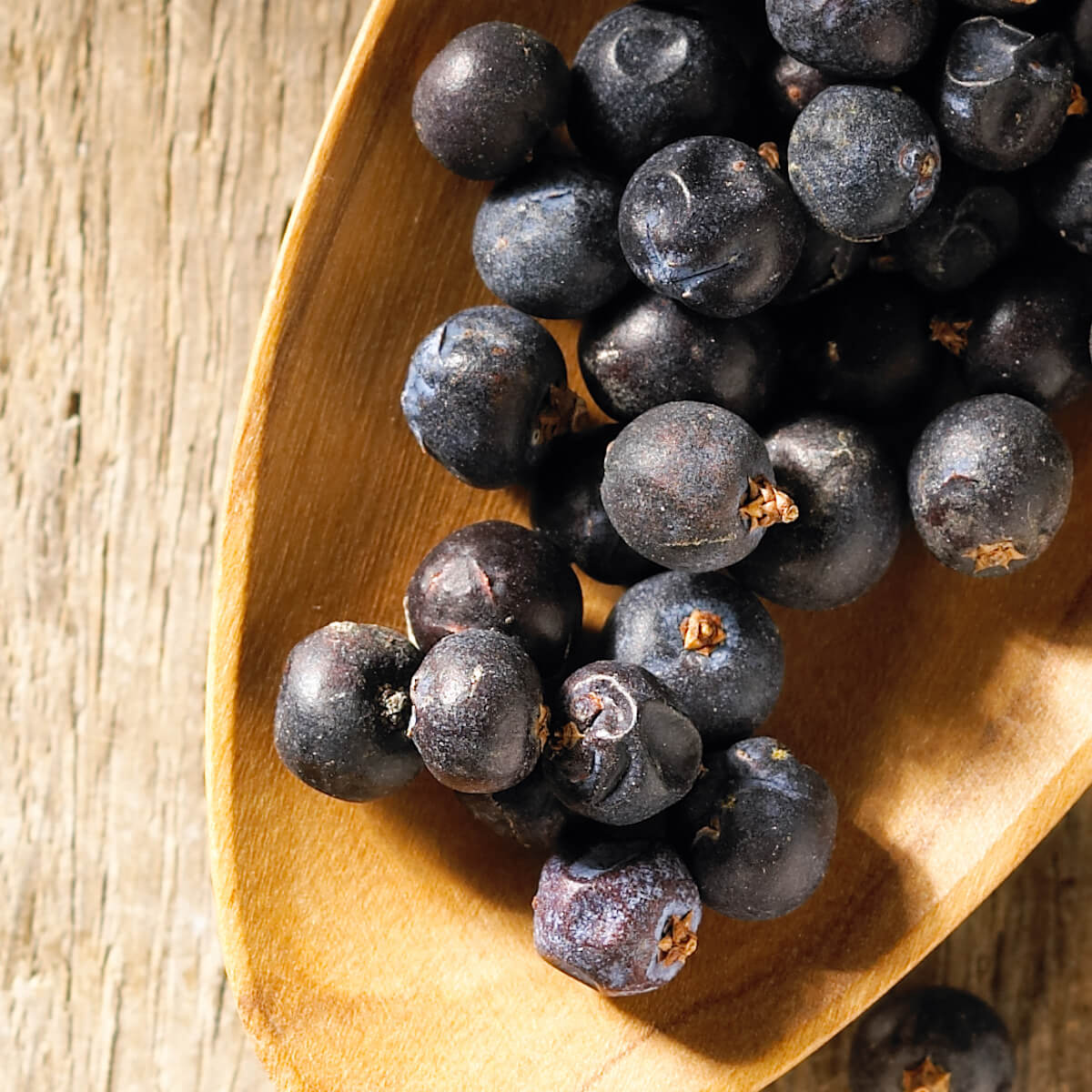Synonyms: botanical family: origin: Classification: spice shape: taste odour: use: Juniper berries have a characteristic balsamic scent and taste sweet-spicy and resinous-bitter. They are suitable for seasoning meat dishes, fish stock, marinades, soups, sauces, pickles and sauerkraut. Juniper berries are particularly popular for longer cooking times. They also serve as an additive in marinades, fish stock and fillings for game and poultry dishes. Juniper berries play a particularly important role in the production of spirits. In medicine, the diuretic active ingredients of juniper berries are used, mostly in teas. tip: Recipe suggestion: knowledge: botany: Home & Distribution: cultivation & extraction: history: Juniper berries
 Botanical name:
Botanical name:
Juniperis communis L.
Kronawitt, spice berry
Cypress plants
Croatia, Albania, Hungary, Italy, Romania
Spice
fruit
sweet and aromatic-spicy
aromatic, turpentine-like
ragouts, game dishes, marinades, sauces, stew, cabbage
Protect from moisture, otherwise they will dry out
Juniper Sauerkraut: Steam 1 finely chopped onion and 1 apple with 1 crushed clove of garlic slowly until soft. Add 500 g sauerkraut and 6 crushed juniper berries and steam briefly. Deglaze with 1/2 l vegetable stock and simmer for 3 minutes. Put into an oven dish and cook at 140° for 1 hour. At the end stir in 1/2 cup of sour cream.
History: Juniper is an ancient healing, seasoning and magic remedy. The Egyptians made mouthwashes from it, the Greeks and Romans used it for snake bites and in the Middle Ages juniper twigs were supposed to keep the devil away.
The evergreen juniper shrub, which belongs to the cypress family, grows mostly waist-high to over-man-high, but sometimes it can grow much bigger. The very pointed, prickly needles stand in clusters on the branches. The small, inconspicuous flowers develop into spherical berry cones, which only reach full maturity in the 3rd year. They have then changed colour from green to a dark, bluish violet. Each of the 6 to 10 mm large berry cones consists of three fused fleshy fruit leaves, each of which contains an egg-shaped, blunt-edged seed.
In almost all of Europe and in temperate Asia, from the Channel to Kamchatka, the juniper with its typical growth is part of the characteristic appearance of barren heath and mountain landscapes.
Juniper grows wild. Therefore, harvesting can be done from wild growing shrubs. After harvesting, the ripe berry cones are dried at room temperature and then the stalk is removed. Although juniper is strictly protected in Germany, it is permitted to pick juniper berries at maturity. In the trade, one finds spice mixtures in crushed form.
Juniper was already mentioned in the papyrus boars as a remedy for digestive problems, urinary disorders and dropsy. Its use as a spice, healing and mystical magic remedy is therefore very old. As early as 3,500 years ago, various herbs and juniper berries were used to make mouthwashes in Egypt. The Germanic tribes took brushwood from the juniper tree, which they considered sacred and revered, to burn victims and cremate their dead. In the Middle Ages, it was believed that juniper branches could be used to drive away the devil, because Christ was supposedly beaten on a juniper cross. Even at that time, people protected themselves from getting bedsores by putting juniper rice on their hats and believed that rods made from juniper branches helped to recover stolen goods.
http://de.wikipedia.org/wiki/Wacholder







